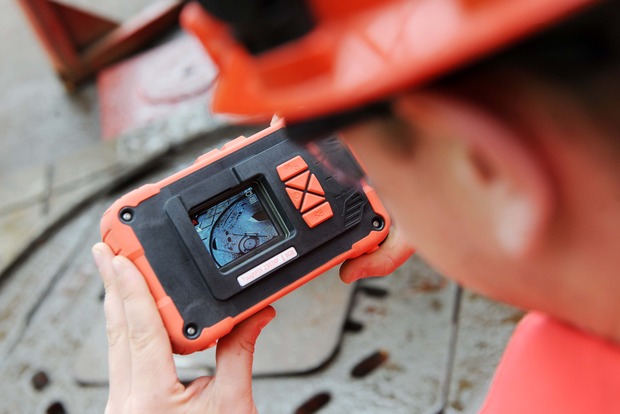Thermal imaging for hazardous environments
19 Jul 2012
?Thermal imaging offers clear advantages in ATEX-rated and other hazardous environments, but the latest equipment designs offer a new set of capabilities for engineers working out in the field.
Global oilfield services provider Weatherford’s operations span the life cycle of a well - from drilling, evaluation, completions to well intervention. Photographing and documenting images for surveys and reports is part of its every-day activities offshore.
For these tasks, Weatherford recently adopted the ToughPIX 2303XP digital camera from CorDEX Instruments. The device is ATEX- and CSA-certified to take images within Zone 1 IIC T4 and Class 1 Division I B, C, D hazardous areas.
People using the device include Weatherford’s mechanised systems engineer Michael Wilson. Based in Aberdeen and the North Sea, his job is to ensure oilfield equipment, such as pressure vessels, pumps, control systems, boilers, heat exchangers, piping and work systems are running safely and efficiently.
Wilson’s work entails carrying out pre-installation surveys, which require high-quality photographic coverage to show in-situ working environments and how operations are functioning.
“With traditional digital cameras the battery is a source of ignition in a zone 1 or 2 area and the flash can set off the UV flame detectors, which could lead to fire & gas system activation. So a gas monitor must be carried at all times and the flash taped over,” said Wilson. The new ATEX-certified [camera] cuts out all of this and makes my job so much easier.”
Big picture
As a systems engineer, Wilson is concerned with the ‘big picture’ of a project: in addition to technical aspects he must consider details like manufacturing, scheduling, testing, installation associated with engineering and scheduled maintenance projects.
Wilson uses the 2303XP to provide visual documentation to support his work. He explained: “It is necessary to back up surveys and reports with photographic evidence to show machinery working in complex systems and running smoothly.
“The camera has helped in allowing critical decisions to be made, when systems are not working or problems occur. With its onboard 8GB memory, it has allowed me to store hundreds of images, which can be easily downloaded to any PC.”
Meanwhile, SABIC UK Petrochemicals Ltd of Middlesbrough, UK, is using the same ATEX-rated cameras from CorDEX Instruments to improve equipment monitoring in hazardous areas at its Teesside petrochemicals plant.
The chemical maker selected the device based on its certifications for use in harsh environments and hazardous areas. Another consideration was the capability it offered to capture still and moving images in AVI format of up to 10 mega pixels.
The SABIC site’s engineering team has noted significant time savings across a number of projects following the adoption of the camera. The device has been used on a number of projects including: monitoring process-critical valves, a tank decommissioning project and tank rim seal fire detection work.
“Using our photographs we have also been able to show the maintenance team which pipework and associated instrumentation has to be disconnected and removed as part of a tank decommissioning project,” said Wayne Douthwaite, assistant technical engineer at the SABIC site in north east England.
“Without the camera this would have required a member of our team to point out or mark the assets before work could begin so it represents a significant time saving for us.”





